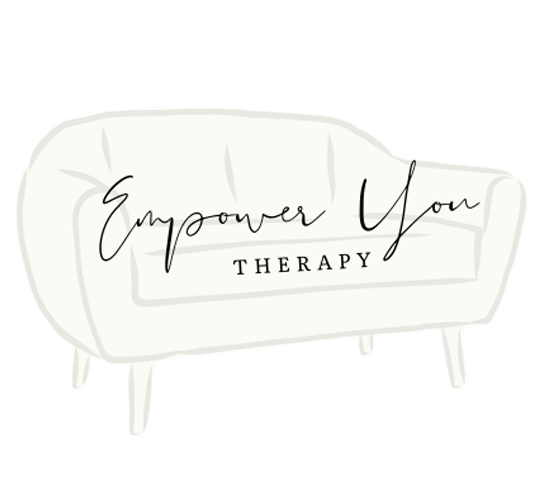At Empower You Therapy in Draper, Utah, we are committed to helping individuals improve their mental well-being through evidence-based practices. Here, we share 55 mental health top tips rooted in therapeutic approaches such as DBT, ACT, CPT, CBT, and IFS, each designed to help you learn how to improve emotional health and develop resilience.
How to Get Started with Your Mental Health Top Tips
Embarking on a journey to better mental health with these mental health top tips can feel exciting yet overwhelming. Start by choosing a few tips that resonate most with you or address areas you’d like to focus on. Setting small, manageable goals will help build momentum and create sustainable change. Remember, you don’t need to incorporate all these practices at once. Gradually adding them into your daily routine over time will allow each habit to take root, leading to more profound and lasting benefits. If you’re uncertain where to start, a therapist in Draper can help tailor an approach to meet your specific needs, providing guidance and support as you integrate these tips into your life.

Tips
- Practice Mindfulness Daily (DBT): Incorporate mindfulness exercises into your daily routine to stay present and reduce anxiety. Mindfulness increases awareness of thoughts and feelings, improving emotional regulation.
- Embrace Radical Acceptance (DBT): Accept situations as they are, instead of fighting against them. This reduces stress and fosters a sense of inner peace, aiding in emotional recovery.
- Use Opposite Action (DBT): When feeling intense emotions, do the opposite of what the urge tells you. For example, if you feel like isolating, seek social interaction. This disrupts unhelpful patterns and promotes healthier choices.
- Engage in Self-Compassion (DBT): Treat yourself with the same kindness you would a friend facing a struggle. Self-compassion aids in decreasing self-criticism and improving self-esteem.
- Identify Core Values (ACT): Determine what truly matters to you and align your actions with these values to create a more meaningful life. Understanding values can enhance motivation and life satisfaction.
- Acceptance as a Friend (ACT): Welcome your thoughts and feelings without judgment to allow them to pass more freely. This reduces the hold these thoughts have on you and fosters emotional flexibility.
- Defusion Techniques (ACT): Use defusion exercises, such as imagining your thoughts as clouds passing in the sky, to reduce the impact of negative thinking on your emotions and behavior.
- Commit to Mindful Action (ACT): Once you’ve identified your values, take small, deliberate steps toward living them out. This builds a sense of purpose and fulfillment in your daily life.
- Challenge Unhelpful Thoughts (CBT): Identify and reframe negative thought patterns to lessen their impact on your mood. Changing how you think can change how you feel and respond to stressors.
- Use Thought Records (CBT): Document negative thoughts and evidence against them to gain perspective and develop balanced thinking patterns.
- Behavioral Activation (CBT): Engage in activities that produce a sense of pleasure or accomplishment to counteract low mood and increase motivation.
- Relaxation Techniques (CBT): Practice deep breathing, progressive muscle relaxation, or visualization to reduce stress and promote relaxation.
- Cognitive Restructuring (CBT): Replace irrational beliefs with healthier, more balanced ones to improve your emotional response to challenging situations.
- Set SMART Goals (CBT): Create Specific, Measurable, Attainable, Relevant, and Time-bound goals to provide direction and motivation for positive change.
- Self-Monitoring (CBT): Track your emotions, behaviors, and thoughts to understand patterns and progress. Awareness is key to effective change.
- Create an Emotional Safe Space (CPT): Design a mental or physical space where you can focus on healing and processing trauma without distraction.
- Write Impact Statements (CPT): Reflect on and express how traumatic events have impacted your beliefs and assumptions to facilitate healing.
- Challenge Misinterpreted Beliefs (CPT): Evaluate distorted beliefs related to trauma to create more balanced and accurate perceptions.
- Emotional Exposure (CPT): Gradually expose yourself to feared emotions in controlled ways to reduce avoidance and increase emotional tolerance.
- Balance Integrative Processing (CPT): Review new, healthier beliefs formed during therapy to reinforce changes and solidify healing.
- Explore Parts Work (IFS): Identify and communicate with your internal “parts” that hold various emotions and beliefs to foster emotional integration and healing.
- Develop Self-Leadership (IFS): Cultivate your “Self” to guide and heal internal parts, promoting cohesion and emotional balance.
- Ask Parts for Permission (IFS): Before making changes, consult your internal parts, acknowledging their protective roles to prevent internal conflict.
- Compassionate Listening (IFS): Listen to your internal parts with empathy and non-judgment to understand their needs and reduce internal turmoil.
- Practice System Rebalancing (IFS): Ensure your internal parts are working collaboratively, enabling emotional regulation and healthier choices.
- Use Journaling to Explore Feelings: Regularly write about your emotions and experiences to gain insight and clarity, helping to process emotional pain.
- Establish Healthy Habits: Cultivate routines that include regular sleep, exercise, and nutrition to support overall mental health.
- Limit Screen Time: Reduce time on digital devices and social media to minimize stress and prioritize real-life connections.
- Express Gratitude: Reflect on things you are grateful for daily to shift focus from what’s wrong to what’s positive in your life.
- Build Supportive Relationships: Foster connections with friends, family, or support groups to create a network of support to rely on during difficult times.
- Pursue Creative Outlets: Engage in hobbies like painting, music, or writing to express emotions and reduce stress.
- Practice Assertive Communication: Express your needs and feelings clearly and respectfully to improve relationships and reduce misunderstandings.
- Utilize “Stop” and “Take a Step Back”: Use these cues to interrupt reactive patterns and consider more adaptive responses to stressors.
- Maintain Physical Health: Addressing your physical body through exercise, hydration, and medical care is integral to supporting mental health.
- Cultivate Acceptance of Change: Develop flexibility in your mindset and openness to change, recognizing it as a constant in life to reduce anxiety and stress.
- Track Mood Changes: Monitor variations in mood to identify triggers and patterns, empowering you to manage those moods more effectively.
- Invest in Professional Growth: Pursue skill development and career goals in alignment with your values to enhance self-esteem and life satisfaction.
- Mindful Eating Practices: Pay attention to what and how you eat, fostering a deeper connection to physical well-being and reducing emotional eating.
- Engage in Community Service: Volunteering fosters a sense of purpose, reducing isolation and contributing to your well-being.
- Practice Regular Self-Reflection: Set time aside to introspect about your goals, values, and emotional state to stay aligned and purposeful.
- Celebrate Small Wins: Acknowledge and reward even minor achievements to build motivation and reinforce progress.
- Seek Therapy When Needed: Engaging with a therapist in Draper provides guidance and tools to handle life’s challenges, offering specialized support.
- Utilize Visualization: Practice envisioning a successful resolution to conflicts or challenges, enhancing confidence and reducing stress.
- Commence “Stopping Exercises”: Use ‘STOP’ to remind yourself to take a break, observe, and plan responses during stress or conflict.
- Incorporate Animal Companionship: Time spent with pets can reduce stress and increase happiness, reinforcing connections with the present.
- Engage in Humor and Laughter: Find humor in daily life and embrace laughter as a stress-relief tool, improving emotional resilience.
- Set Boundaries with Toxic People: Recognize and enforce personal limits with those who drain your emotional energy to protect your well-being.
- Honor Your Instincts: Pay attention to your gut feelings when making decisions, as they can guide you toward fulfilling choices.
- Meditate Regularly: Dedicate time to meditation to enhance mental clarity, reduce stress, and cultivate emotional stability.
- Use Technology Wisely: Leverage apps for mental wellness, such as mindfulness programs, to assist with regular mental health care.
- Enhance Environmental Wellness: Create a calming home and work environment that supports your emotional health.
- Opt for Therapy in Community: Joining groups or classes focusing on wellness or therapy in Draper can offer communal support and shared experience in growth.
- Dabble in Culinary Exploration: Enjoy trying new recipes and savoring meals to foster creativity and mindfulness.
- Engage in Nature Activities: Spend time outdoors to ground yourself, reduce stress, and foster a reconnection with nature.
- Persevere with Patience: Allow time for growth and healing, knowing that mental wellness is a marathon and not a sprint.
Conclusion
Incorporating these mental health top tips into your daily routine can significantly improve your emotional well-being and provide a robust framework for handling life’s challenges. Each suggestion offers a specific pathway to learn how to improve emotional health, drawing from respected therapeutic models. If you find these practices resonate with you, consider seeking therapy in Draper with a local therapist in Draper to deepen your journey and gain professional guidance tailored to your needs. Engaging with Empower You Therapy Utah offers access to expert care grounded in the principles of lasting change and holistic health. Take these steps today to enhance your emotional resilience and well-being as part of a comprehensive wellness strategy.
Check out our expert therapists in Draper by clicking here. Schedule a consultation with us by clicking here.
Post written by Natalie Stringham
Therapist Draper
Therapist Draper. Counseling in Draper Utah, Counseling Draper







